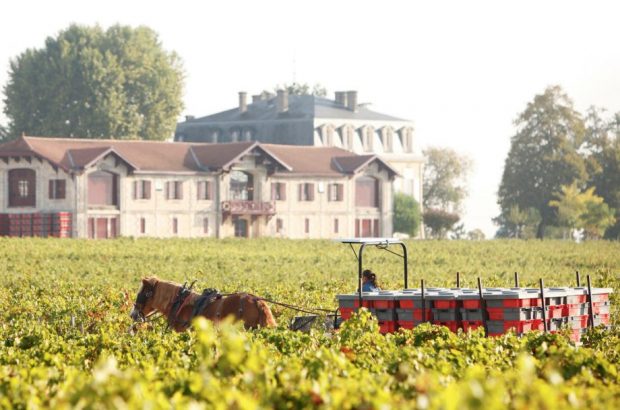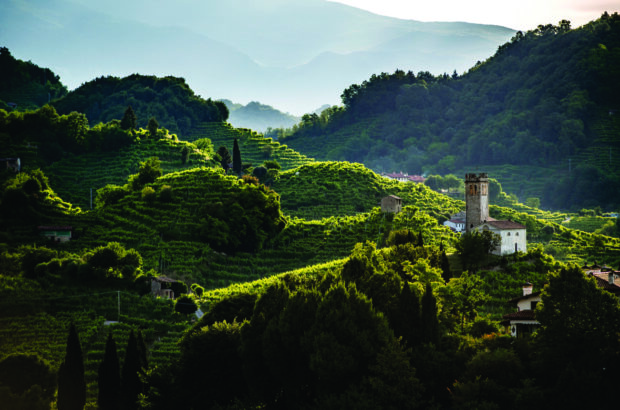Kim Chalmers is a managing director of her family vine grape and wine business in Victoria, Australia. Starting her career as a composer, Kim came back to her viticulture roots in 2005 working in the nursery, vineyards and winery to import, promote, propagate, sustainably grow and authentically make wines from grape varieties new to Australia. The Chalmers family has imported over 50 grape varieties into Australia over the last two decades, many of which have helped shape the modern face of Australian wine.
How did you get here?
I grew up immersed in the family nursery and vineyard business, went off to study and then teach music composition, then came back to the family business when I was 27.
What’s the best thing about your job?
The versatility. Every day is different. Working across nursery propagation, grape farming, winemaking, marketing, travel and plenty of research and development. It’s never boring.
What’s the most common misconception about your job?
That Chalmers is a large company. We have a wide network and have made a significant impression on the Australian industry but we are still a small family business.
What’s your greatest moment, professionally?
Presenting to 1,000 industry professionals at the Australia Wine Industry Technical Conference in 2016, about hot-climate grape growing and winemaking, and climate change. I followed the director of Germany’s Geisenheim institute, which was terrifying, but my story resonated. It felt like a turning point.
And your greatest mistake?
Not travelling more before having kids. There is so much to see and learn around the world, and it’s trickier to be away now.
Which Italian grapes are most in demand in Australia?
Nero d’Avola and Fiano are really settling into the scene now with mainstream presence after almost 20 years of production in Australia. Classics like Sangiovese and Nebbiolo are always steady and of course the controversial Prosecco (Glera) is huge in Australia.
Why do the Italian grapes in particular work so well there?
Most Australian vineyards were established with just a handful of the famous French varieties despite our continent having a whole range of diverse wine-growing regions. Imagine if Austria and the Algarve grew the same varieties? The success of Italian varieties across Australia has been the clever viticultural decisions made about what to grow where, connecting to our places more intuitively and choosing grape varieties which have the viticultural characteristics to thrive in that environment. These diverse varieties, from Mediterranean ones like Nero d’Avola or Vermentino to cooler climate ones like Teroldego or Ribolla Gialla, are offering growers the opportunity to express their unique sites better.
Are there any grapes that you’re particularly excited by?
Falanghina and Pecorino are working really well so far, after we introduced them in 2015 – high-acid, textural whites are in demand. We recently imported Nerello Mascalese, after a 12-year process of sourcing and importation. At the moment we have just one mother plant, but there is a list of more than 50 producers waiting for vines. We will never be able to make Etna wines but we are excited to see what Australian Nerello will be.
What do the Italians think?
We have a great network of colleagues in Italy who are very enthusiastic about the globalisation of Italian grape varieties. While some regions see non-Italian wines made from Italian grapes as competition, our colleagues see it as free advertising for their varieties. An international marketing campaign. Giuseppe Russo from Girolamo Russo has shared his clones with us and can’t wait to see how his beloved Etna grapes perform in Australia.
What’s the key message about the wines you’re making from these varieties?
We are making Australian wine. We happen to be using grapes that originated in Italy. But we are not emulating wine styles. We choose the varieties we grow based on their viticultural attributes, their suitability to our site and climate. The wines we make from them are guided by what we see in the fruit, not any preconceived tradition of style. A Barossa producer doesn’t get asked why they grow French grapes when you’re talking about Shiraz. We don’t compare their wine to a St-Joseph, because Shiraz has been adopted and considered as Australian now. The same goes for Arneis or Aglianico. We are using a broader varietal language to express and define the regional Australian wines of the future.
What are the main challenges involved in getting the vines over to Australia?
Sourcing clean, healthy, quality clones overseas, strict importation conditions and long quarantine periods before plants are released add complexity to the process. But no pain, no gain. Strong biosecurity is a good thing. In the end we can take that one mother plant and create hundreds of vines and the first wines in about three years. From the selection of a new import to the first wine being made in Australia takes on average about five years.
What message would you give wine-growers in Australia and beyond who are worried about climate change?
Be worried. Act now. Reduce emissions however you can. In terms of being able to continue to make delicious wines sustainably, be sensitive to your site’s conditions and be ahead of the curve on where the climate is going, design your vineyard architecture and choose your varieties and rootstocks wisely for the lowest environmental impact and best wine quality. Great wine can be grown anywhere with the right ingredients and cultural attitude.












